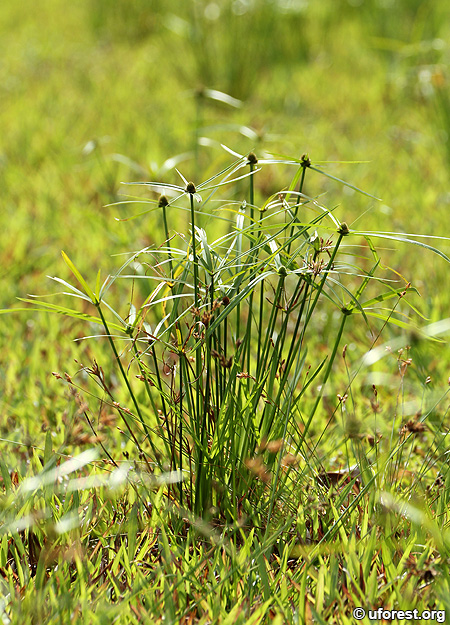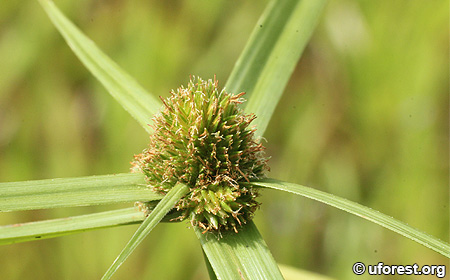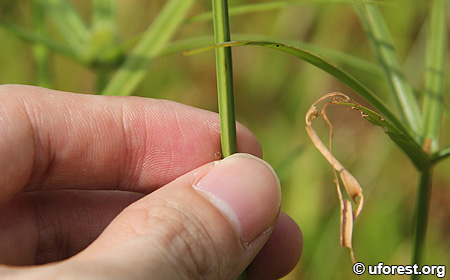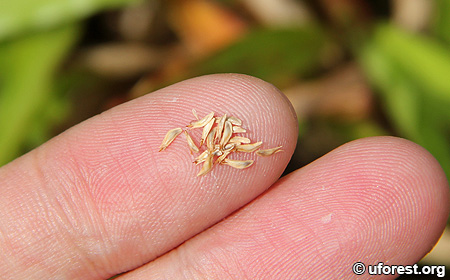| Etymology | Genus | After Peter Kylling, a 17th century Danish botanist. |
|---|---|---|
| Species | Many leaves, likely referring to the numerous involucral bracts surrounding the inflorescence. | |
| Family | Cyperaceae | |
| Synonyms | Kyllinga aromatica Ridl. | |
| Common Names | Greater Kyllinga, Navua Sedge | |
| Status | Exotic: Naturalised | |
| Form | Herb | |
| Native Distribution | Africa, East Africa Islands | |
Diagnostics:
Very common in unmanaged lawns and scrublands, Kyllinga polyphylla is a upright herb with the distinctive leafy bracts surrounding the inflorescence spike at the tip as with all Kyllinga species.
It can be differentiated from other congeners by its larger size in almost any attribute; from height, its inflorescence spikes, broader and longer involucral bracts, with them also in greater numbers (5-8).
Interesting Facts:
The Greater Kyllinga grows in moist fertile soil, and in the full sun (Swarbrick, 1997). It can be checked and suppressed by cultivation, or from vigorous, well-adapted and well-managed grasses.

Clusters of Greater Kyllinga sprouting from an unmanaged lawn.

Upright form of the Greater Kyllinga.

Inflorescence spike with surrounding bracts.

Close-up of the inflorescence.

Triangular stem.

Fruits.
References
Swarbrick JT (1997) Environmental weeds and exotic plants on Christmas Island, Indian Ocean: a report to Parks Australia. 101 pp.
Author: Siyang
Posted: 2018-11-03